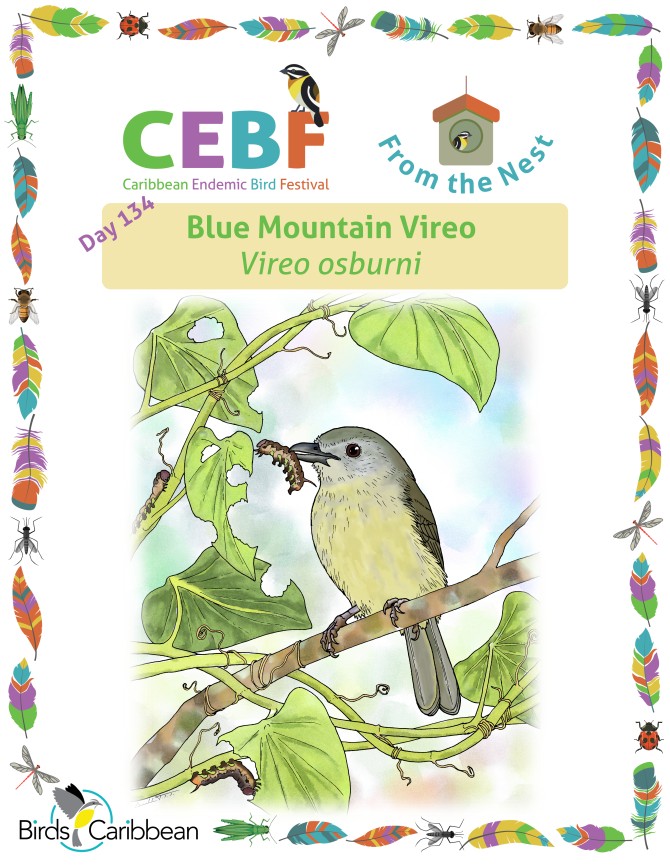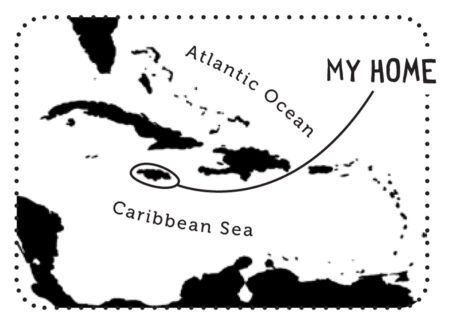Celebrate the Caribbean Endemic Bird Festival (CEBF) with us! Our theme in 2024 is “Protect Insects, Protect Birds”—highlighting the importance of protecting insects for birds and our environment. Have fun learning about a new endemic bird every day. We have colouring pages, puzzles, activities, and more. Download for free and enjoy learning about and celebrating nature!
Endemic Bird of the Day: Blue Mountain Vireo
The Blue Mountain Vireo is not blue in colour, doesn’t sing the blues, and is not restricted to the Blue Mountains in Jamaica as its name suggests. However, it is known for its distinctive song, a long trilling whistle, and its alarm call, a harsh “brrrr” which drops in pitch at the end. They are very secretive and are often heard before being seen.
The Blue Mountain Vireo is described as a plain, chunky vireo with a blue-gray head, heavy dark bill, and yellow underparts. It has no facial markings or wing bars, unlike the Jamaican Vireo, which is smaller with conspicuous white wing bars.
This lovely vireo, endemic to Jamaica, is an uncommon resident in humid forest, especially in montane regions. Its habitat ranges from the low elevations of Windsor in Cockpit Country to the high elevations of the Blue Mountains (500-2000m). They are also found in degraded woodlands, farms, gardens, shade coffee plantations, and along roads in higher and wetter areas in Jamaica. They often forage in dense foliage, searching leaves, lichens, and under tree bark for juicy and crunchy insects (beetles, grubs, and spiders), or close to the ground where they glean insects off flowers. They also eat fruit. They usually forage alone or in small mixed flocks with other insectivorous birds.
Their nesting period runs from March to July, during which time Blue Mountain Vireos build a cup-shaped nest using mostly moss. Their nests can be seen dangling from trees or even medium height saplings. Eggs are spotted, but information about clutch size, incubation, and fledging are currently unknown.
The Blue Mountain Vireo is listed as Near Threatened on the IUCN Red List. Habitat loss is the main threat to this species. Trees within its habitat are cut down for charcoal burning, small-scale farming, and development. Bush fires also limit the area of suitable habitat available for Blue Mountain Vireos and other wildlife. It is important that we protect their habitats by not clearing large areas in the forest, and that we work towards restoring degraded parts of their habitats by planting native trees.
Learn more about this species, including its range, photos, and calls here. Great news! If you’re in the Caribbean, thanks to BirdsCaribbean, you have free access to Birds of the World and you can find out even more in the full species account of this bird!
Thanks to Arnaldo Toledo for the illustration and Damion Whyte for the text!
Colour in the Blue Mountain Vireo
Download our West Indies Endemic Bird colouring page. Use the photos below as your guide, or you can look up pictures of the bird online or in a bird field guide if you have one. Share your coloured-in page with us by posting it online and tagging us @BirdsCaribbean #CEBFfromthenest
Listen to the song of the Blue Mountain Vireo
The song of the Blue Mountain Vireo is a loud, musical trill.
Puzzle of the Day
Click on the image below to do the puzzle. You can make the puzzle as easy or as hard as you like – for example, 6, 8, or 12 pieces for young children, all the way up to 1,024 pieces for those that are up for a challenge!
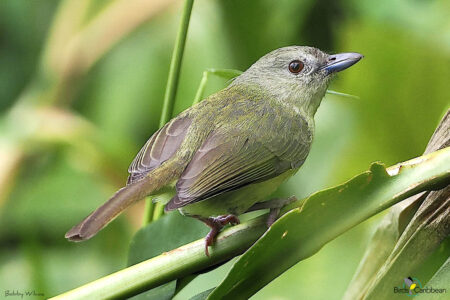
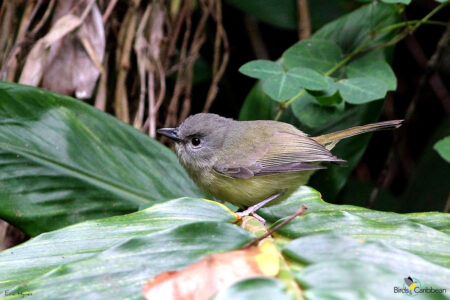
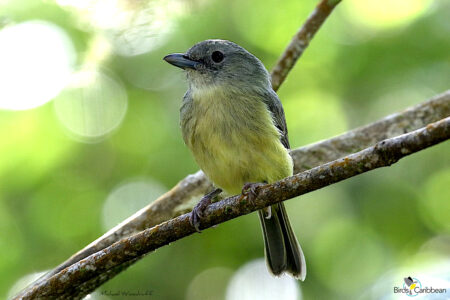
Activity of the Day
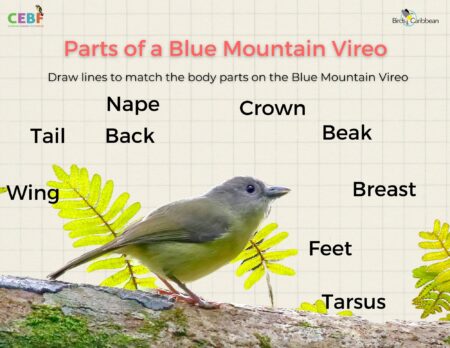 FOR KIDS : Do you know what the different parts of a bird are called? Knowing them can help you to learn how to describe and identify birds, as well as colour them in. Learn the names for the parts of a bird by checking out the diagram in this page.
FOR KIDS : Do you know what the different parts of a bird are called? Knowing them can help you to learn how to describe and identify birds, as well as colour them in. Learn the names for the parts of a bird by checking out the diagram in this page.
Test your knowledge on today’s endemic bird by matching the correct names to the correct ‘parts of a Blue Mountain Vireo’ and completing this sheet.
Want to check your answers? You can see where all the words matched up to here.
FOR KIDS AND ADULTS : Enjoy this video of a Blue Mountain Vireo in the wild!
Find out more about Jamaica’s endemic with this fantastic poster made by BirdLife Jamaica featuring ALL the endemic birds on the island!

